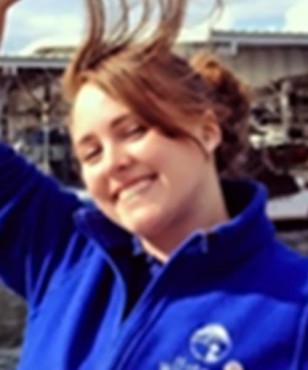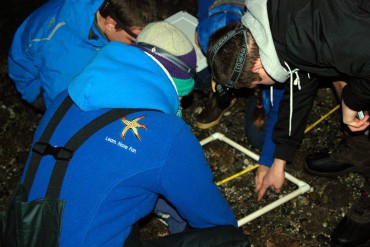
Winter is not your typical time to go to the beach.
One, it’s cold. Two, it’s probably raining. Lastly, the tide is too high — that is, unless you plan your beach venture in the dark of the night.
That’s right, around here low tides happen in the evening this time of year. Which is why if you plan on going to the beach, nighttime is the perfect time as long as you have warm layers and a headlamp.
I partook in a series of three moonlit beach excursions in early December. Why, you may ask. Beach monitoring with Harbor WildWatch, of course!
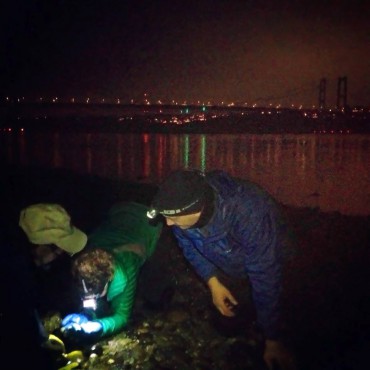
This citizen science opportunity is not only a chance to visit beaches that are normally closed to the public in the evening hours but it is also a way to gauge the future impacts of natural or human-induced events on our local beaches.
By establishing what’s living on the beach twice a year (there are summer monitoring opportunities for you fair-weather folks) we can determine how the beach changes over time. But what does this really mean?
It means that we are out there on our hands and knees (knee pads are provided) in some cases, identifying and counting each teeny tiny little snail living on a rock. Thankfully there are experts there to tell you all six names this snail has gone through throughout its biological existence so no worries if you are not an intertidal expert.
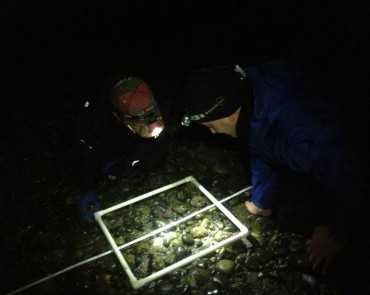
Other times it’s a race to find the simple stuff. Do you see a crab? How about some live barnacles? If an animal is in the area, it counts and you don’t have to tally exactly how many individual creatures are present.
Another interesting procedure is measuring how the slope of the beach is changing over time. Because it is dark, this is at least a three-person task. One person holds the giant measuring stick, another looks through a leveled survey device, and a third person is crucial for shining a light on the stadia rod so that a measurement can be read as the first person marches up the beach.
This means we can’t do this stuff alone. The more, the merrie — and brighter!
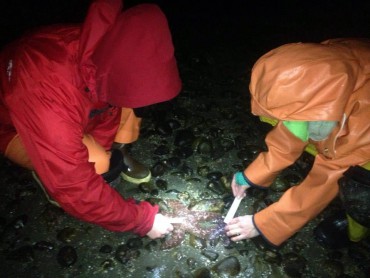
Another item of business during these events is to take a close look at the seastars present. We are really excited to be observing more small healthy seastars clinging to the cold shore rocks than we did last year.
The gathered data is used by UC Santa Cruz scientists as they work to understand seastar wasting.
If you’ve been living like a seastar, under a rock, you should do some research on the phenomena that has been turning these star predators into piles of mush. Seastar wasting has been observed along much of the North American Pacific Coast, including each of the local beaches we have been monitoring since 2013.
Finding healthy seastars is not the only exciting thing happening. Last year, our counting abilities and eyesight were put to the test as we discovered that the lower tide levels were covered in itty-bitty sand dollar babies. We also just recently had a sea lion cheering on our efforts while monitoring with the Narrows Bridge looming in the background at Narrows Park.
At Purdy Sand Spit, I was very excited to see for the first time a rare burrowing sea cucumber. What magical moments will you discover at night on the beach?
If this all sounds like fun, you are the unique individual I would love to have by my side while taking a closer look at our local beaches. There are four more opportunities in January.
While it may seem crazy to head to the beach in the middle of the night, it’s not crazy to participate in an event that gets you, your friends and family directly involved with the protection of our local beaches.
Please contact Stena if you are interested in joining in on these unique adventures.




